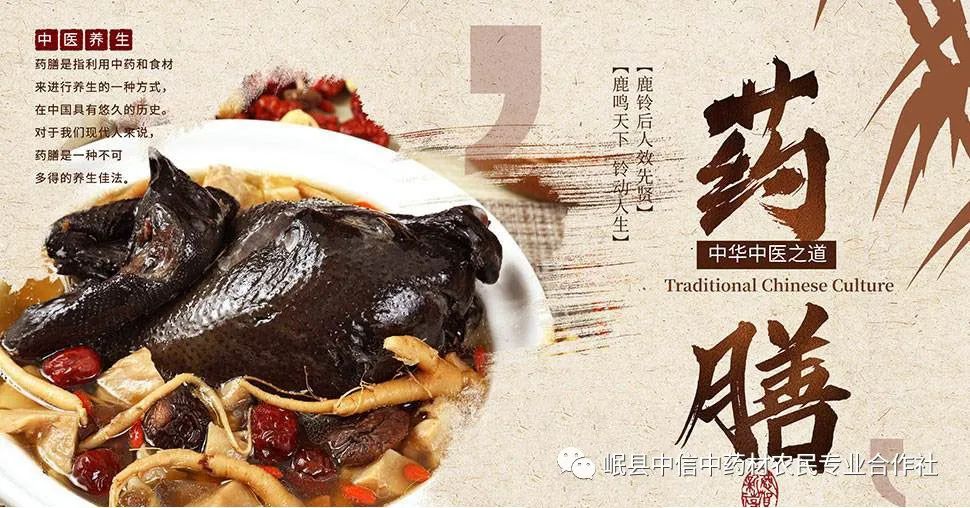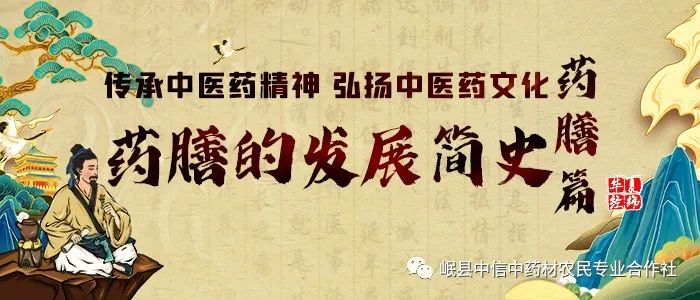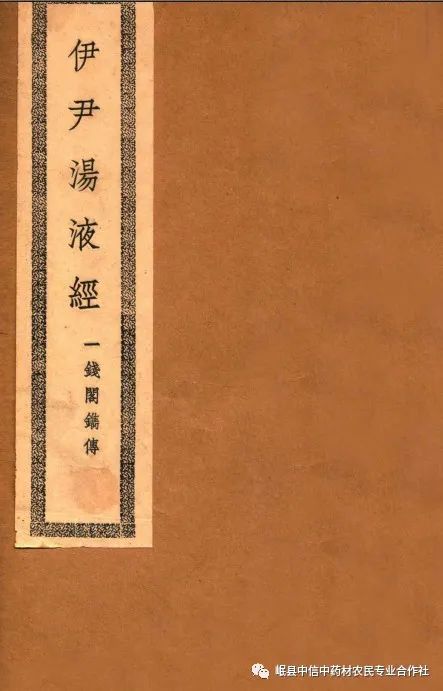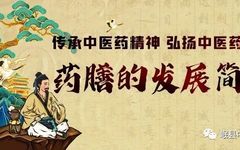

Overview
Yao Shan (Medicinal Cuisine) is a delicious food made under the guidance of the theories of Traditional Chinese Medicine (TCM), culinary science, and nutrition, strictly following medicinal cuisine recipes that combine Chinese herbs with certain food items of medicinal value, using unique Chinese cooking techniques and modern scientific methods to create dishes with appealing color, aroma, taste, and shape.In simple terms, medicinal cuisine is a gourmet food made by pairing medicinal materials with ingredients. It is a product of the combination of traditional medical knowledge and culinary experience in China. It embodies the concept of “medicine in food,” where medicine is treated as food, and food is endowed with medicinal properties, allowing the two to complement and enhance each other; it possesses high nutritional value and can prevent and treat diseases, promote health, and prolong life.

The Origin and Earliest Records of Medicinal Cuisine
In the primitive stage of human society, people did not have the ability to separate food from medicine. The Han Fei Zi records: “In ancient times… people ate fruits, melons, and shellfish, which had foul odors and harmed the stomach, leading to many diseases among the people.” The Huai Nan Zi also records: “In ancient times, people ate grass and drank water, foraged for fruits, and consumed fish, often suffering from diseases caused by harmful foods.” This indicates that the ancestors in ancient times indeed suffered from diseases caused by harmful diets.Through long-term practical experience, people gradually recognized which foods were beneficial and which were harmful. The Huai Nan Zi states: “Shennong… tasted the flavors of a hundred herbs and the sweetness and bitterness of spring water, allowing the people to know what to avoid. At that time, he encountered seventy poisons in one day,” vividly illustrating the ancestors’ efforts to avoid toxic foods and consume non-toxic ones. At the same time, people discovered that many types of food could alleviate the suffering caused by diseases, and some foods had the effect of strengthening the body. Thus, many foods that could fill the stomach and treat diseases were valued, which is the theoretical basis for the TCM concept of “medicinal and food sharing the same source.”Modern archaeologists have discovered many medicinal foods from primitive times, and modern ethnology has found that some primitive tribes still make foods with medicinal properties. All of this proves that medicinal cuisine can indeed be said to have originated in the primitive era of humanity. However, this primitive form of medicinal cuisine cannot be considered true medicinal cuisine, as people at that time were not consciously utilizing the medicinal properties of food.So when did true medicinal cuisine originate in China, and how did it develop and evolve? After the emergence of written characters in China, the words for “medicine” and “cuisine” appeared in oracle bone inscriptions and bronze inscriptions. The earliest use of the term “medicinal cuisine” can be found in the Book of the Later Han, where it states, “The mother adjusted the medicinal cuisine with deep affection.” The History of Song also records, “He rose early to serve medicinal cuisine.” These records prove that at least over a thousand years ago, medicinal cuisine had already appeared in China. Before the term “medicinal cuisine” emerged, ancient Chinese texts had already documented the preparation and application of medicinal cuisine.
The Origin of Chinese Medicinal Cuisine and Health Care

The Yi Yin Tang Ye Jing (Book of Soup and Liquid) (Image source: Internet)
According to literature, the origin of Chinese medicinal cuisine and health care can be traced back to the time of Emperor Yu. At this time, there were already various cooking methods, such as Yi Yin from the Shang Dynasty, who was skilled in making soups and served as the chef for the Soup King.From oracle bone inscriptions, various grains such as millet, wheat, and rice were already being brewed in large quantities. In the Neolithic era, pottery wine vessels were discovered at the Longshan culture site before the Shang Dynasty. Wine is a beverage with significant medicinal properties, and later generations believed it had the effect of “when evil qi arrives, consuming it ensures safety.” As an organic solvent, it can dissolve more effective components, and the medicinal wine made from it later developed into an anesthetic. Wine was also frequently used in dietary therapy cooking.It is said that Yi Di once made wine for Emperor Yu to taste for health benefits. The Book of Songs states, “For this spring wine, to prolong longevity,” indicating that wine has the effect of delaying aging and promoting health. By the Shang Dynasty, Yi Yin made soups and wrote the Book of Soup and Liquid to treat diseases through cooking methods. The Records of the Grand Historian states: “Yi Yin explained the flavors of soups.” The Comprehensive Mirror for Aid in Government describes him as “compassionate towards the suffering of the people, creating soup and liquid based on the herbal classics, clarifying the properties of cold, heat, warmth, and coolness, and the flavors of sour, bitter, spicy, sweet, salty, and bland, as well as the suitability of light and heavy, clear and turbid, yin and yang, and the twelve meridians.” The Classic of Simple Questions also states, “Yi Yin, with the talent of a sub-sage, compiled the herbal classics of Shennong to create soup and liquid.”
“Medicinal Cuisine” First Appeared in Stories of Filial Piety
In Han Zhong, Cheng Wenju’s wife was the sister of Li Fa from the same district, named Mu Jiang. She had two sons, while her husband’s previous wife had four sons. Wenju served as the magistrate of Anzhong and died in office. The four sons, feeling resentment towards their stepmother, accumulated grievances over time, while Mu Jiang was kind and loving, nurturing them with care, providing food and resources that exceeded those of her own children. Someone advised her, saying, “The four sons are extremely unfilial; why not separate and distance yourself from them?” She replied, “I am guiding them with righteousness, hoping they will change for the better.” When the eldest son of the previous wife fell seriously ill, the mother, out of compassion, personally prepared medicinal cuisine, and her affection was profound. The son eventually recovered, and he called his three brothers, saying, “The kindness and compassion of our stepmother come from heaven. We brothers do not recognize her nurturing; we are worse than beasts. Although our mother’s path is more generous, our wrongdoings are deep!” They then brought their three brothers to the Nan Zheng prison, presented their mother’s virtues, and confessed their wrongs, seeking to be pardoned. The county reported this to the prefecture, and the prefect praised their mother, exempted the family from labor, released the four sons, and allowed them to reform. From then on, their education improved, and they became good people. (From Book of the Later Han, Chapter 74 on Filial Women)This is the first appearance of the term “medicinal cuisine” in ancient literature. Subsequently, the term “medicinal cuisine” also appeared in ancient texts such as the Book of Northern History, which records that Hu Guozhen, “suffered from a severe illness, and Empress Ling personally served medicinal cuisine. Twelve days later, he passed away at the age of eighty.” Empress Ling was Hu Guozhen’s daughter, who performed filial duties with her own hands. The History of Song records Zhang Guan serving his father: “He rose early to serve medicinal cuisine before attending to his duties, never neglecting it for a day,” calling him “extremely filial.”
All images and texts above are sourced from the internet; please contact us for removal in case of infringement. Thank you!

